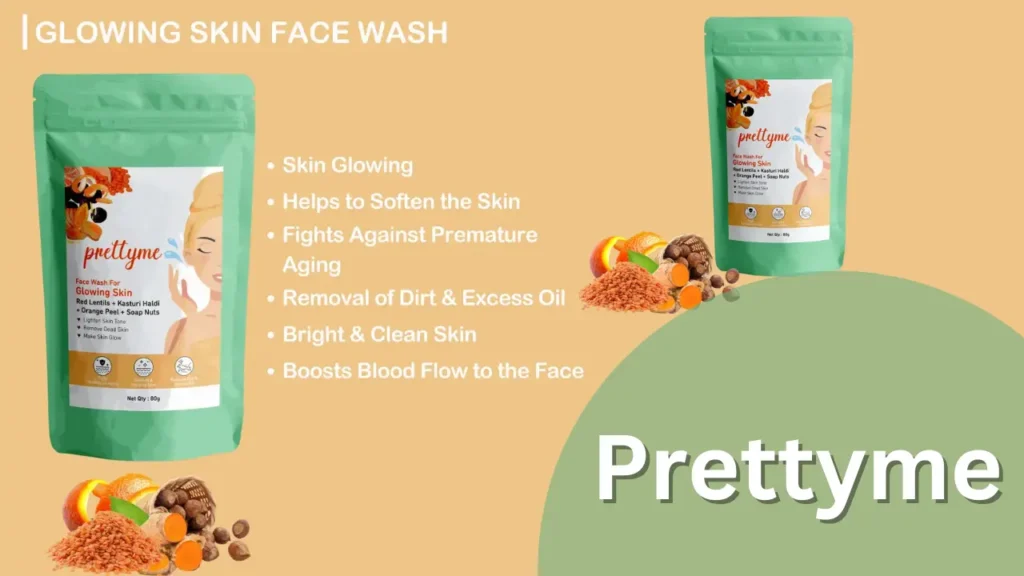Getting soft, smooth skin can really boost your look and confidence. If you’re dealing with dryness, uneven texture, or just want a glow, you’re in the right place. We’ve got expert tips and tricks to help you achieve soft skin easily.
Key Takeaways
- Understand your unique skin type and its specific care needs
- Establish an effective daily skincare routine for soft, nourished skin
- Discover the power of proper cleansing and exfoliation for a smooth texture
- Explore natural remedies and professional treatments to boost skin softness
- Adopt lifestyle habits that support a soft, healthy complexion
Understanding Your Skin Type and Its Needs
To get soft, healthy skin, first know your skin type and what it needs. By understanding your skin, you can make your skin care routine better. This leads to a more effective beauty plan.
Common Skin Types and Their Characteristics
There are a few main skin types, each with its own traits:
- Dry skin – Feels tight, flaky, and often shows fine lines.
- Oily skin – Looks shiny, with big pores and often gets acne.
- Combination skin – Has both dry and oily areas, usually shiny in the T-zone.
- Sensitive skin – Gets easily irritated, with redness, itchiness, and reacts to some products.
How to Determine Your Skin Type at Home
Finding out your skin type is simple at home. Watch how your skin acts all day. Does it feel dry or get oily? Try a blotting test by lightly pressing a tissue on your face. See how much oil it picks up to figure out your skin type.
Specific Care Requirements for Each Skin Type
After figuring out your skin type, adjust your skin care routine accordingly. For dry skin, use a creamy cleanser and a thick moisturizer. Oily skin does well with a gel cleanser and a light moisturizer. Dermatologist tips can help find the best products and methods for your skin.
“Knowing your skin type is the first step to creating an effective and personalized skin care routine.”
Essential Daily Skincare Routine for Soft Skin
To get soft, supple skin, you need a daily skincare routine. By following a few key steps, you can make your skin smooth and radiant. Let’s look at the important parts of a good skincare routine for soft skin.
Cleanse with Care
Begin by gently washing your face. Pick a mild, non-drying cleanser that gets rid of dirt without taking away your skin’s natural oils. Massage it into your face in circular motions and then rinse with lukewarm water.
Tone for Balance
After washing, use a hydrating toner to balance your skin’s pH. This step prepares your skin for the next steps in your skin care routine. Choose toners with soothing ingredients like rose water or aloe vera to calm and refresh your skin.
Moisturize for Hydration
Keeping your skin moist is key for soft, supple skin. Use a moisturizer that fits your skin type, focusing on dry or tight areas. Gently massage the moisturizing techniques into your skin until it’s fully absorbed.
For more skin hydration, try using a facial oil or serum before your moisturizer. These formulas deeply nourish and replenish your skin.
“Consistent, gentle skincare is the key to maintaining soft, healthy skin.”
Remember, the secret to a great daily skincare routine is to be consistent. Stick to this simple, yet effective routine, and you’ll get the soft, radiant skin you want.
| Step | Product | Purpose |
|---|---|---|
| Cleanse | Gentle Facial Cleanser | Removes impurities and excess oil |
| Tone | Hydrating Facial Toner | Balances skin’s pH and prepares for next steps |
| Moisturize | Moisturizer Suited to Skin Type | Locks in hydration for soft, smooth skin |
| Optional | Facial Oil or Serum | Provides an extra boost of nourishment |
Ways to Get Soft Skin Through Proper Cleansing
Getting soft, supple skin starts with a good cleansing routine. Cleansing removes dirt, oil, and impurities. It also helps your skin absorb skin care better. Let’s look at the key parts of effective cleansing for soft, radiant skin.
Choosing the Right Cleanser
Choosing the right cleanser is key for your skin type. For dry skin, choose a creamy or hydrating formula. It won’t take away your natural oils. For oily or combination skin, a gel-based or foaming cleanser controls oil. If you have sensitive skin, pick gentle, fragrance-free cleansers to avoid irritation.
Best Cleansing Techniques
- Use lukewarm water to wet your face, as hot water can disrupt the skin’s natural moisture barrier.
- Apply a small amount of cleanser and massage it into your skin using gentle, circular motions.
- Rinse thoroughly with clean water to remove all traces of the product.
- Pat your skin dry with a soft, clean towel, avoiding vigorous rubbing.
Common Cleansing Mistakes to Avoid
- Overwashing: Cleansing more than twice a day can strip your skin of its natural oils, leading to dryness and irritation.
- Using too much product: A pea-sized amount of cleanser is usually enough to effectively clean your face.
- Neglecting to remove makeup: Leaving makeup on overnight can clog pores and prevent your skin from properly regenerating.
- Scrubbing too hard: Aggressive scrubbing can damage the skin’s delicate surface, causing inflammation and redness.
By following these guidelines and using the right cleansing techniques, you can get the soft, radiant skin you want. Remember, being consistent is important for healthy, glowing skin.
| Skin Type | Recommended Cleanser |
|---|---|
| Dry Skin | Creamy or Hydrating Cleanser |
| Oily/Combination Skin | Gel-Based or Foaming Cleanser |
| Sensitive Skin | Gentle, Fragrance-Free Cleanser |
Also Read: How to Prevent Hair Frizz: 10 Proven Methods for Silky Smooth Hair
The Role of Exfoliation in Achieving Smooth Skin
Many people want a smooth, glowing face. Exfoliation is key to getting this. It removes dead skin cells, keeping your skin soft and supple.
There are many exfoliation methods to try. Mechanical exfoliation, like scrubs or dry brushing, physically removes dead skin. Chemical exfoliation, with alpha-hydroxy acids (AHAs) or beta-hydroxy acids (BHAs), breaks down these cells.
- Mechanical exfoliation: Helps to improve skin texture and smooth complexion by physically removing dead skin cells.
- Chemical exfoliation: Promotes cell turnover and reveals brighter, more radiant skin.
Finding the right balance in exfoliation is important. Too much can cause irritation and dryness. Aim to exfoliate 1-2 times a week, adjusting based on your skin’s needs.
| Exfoliation Method | Benefits | Frequency |
|---|---|---|
| Mechanical (Scrubs, Brushes) | Improves skin texture, smooths complexion | 1-2 times per week |
| Chemical (AHAs, BHAs) | Promotes cell turnover, reveals brighter skin | 1-2 times per week |
Using the right exfoliation methods can give you the smooth skin you want. Listen to your skin and adjust your routine for the best results.
Moisturizing Techniques for Lasting Hydration
Getting soft, supple skin is more than just washing and exfoliating. It’s about the right moisturizing methods. Using the best moisturizing strategies in your daily routine can keep your skin hydrated and glowing.
Types of Moisturizers
There’s no single moisturizer for everyone. Your skin type and needs decide the best moisturizer for you. You can choose from light, oil-free to thick, creamy moisturizers. Try different ones to find your perfect match.
Best Time to Apply Moisturizer
When to moisturize is key. Apply it right after washing, when your skin is still wet. This seals in moisture and stops dehydration. Also, reapply moisturizer during dry or harsh times to keep your skin hydrated.
Layering Products Effectively
For the best skin hydration, layer your skincare. Start with a light serum or essence, then a moisturizing techniques product. Finish with an occlusive like facial oil or balm. This way, your skin gets the most from each product, staying soft and bright.
| Moisturizer Type | Best for Skin Type | Key Ingredients |
|---|---|---|
| Water-based | Oily/Combination | Glycerin, Hyaluronic Acid |
| Oil-based | Dry/Mature | Ceramides, Fatty Acids |
| Gel-cream | Normal/Sensitive | Aloe Vera, Vitamin E |
“Proper moisturizing is the foundation for soft, healthy skin. Experiment with different techniques and products to find what works best for you.”
Natural Remedies and DIY Solutions for Soft Skin
Getting soft, radiant skin doesn’t have to cost a lot. You can find many beauty hacks and DIY solutions in your kitchen or garden. Let’s look at some easy ways to add natural remedies to your routine for soft skin.
Honey and Oatmeal Face Mask
Honey is great for moisturizing and soothing your skin. Mix it with oatmeal for a face mask that softens and smooths your skin. Just mix honey and ground oats, then massage it on clean skin. Leave it on for 10-15 minutes before rinsing.
Coconut Oil Body Scrub
Make a body scrub with coconut oil to exfoliate and hydrate. Mix coconut oil with brown sugar or sea salt. Rub it on damp skin to feel silky-soft. It also removes dead cells for smoother skin.
| Natural Ingredient | Skin Benefit |
|---|---|
| Aloe Vera | Soothing, Hydrating |
| Shea Butter | Deeply Moisturizing |
| Baking Soda | Gentle Exfoliating |
These are just a few natural remedies and beauty hacks for soft, glowing skin. Using DIY treatments can nourish your skin from the inside out. This leads to long-lasting softness and radiance.
“The best skincare is the one you can make yourself, with natural ingredients you know and trust.”
Prettyme Natural Face Pack For Acne and Pimple Prone Skin
Prettyme Acne and pimple control face pack is made with love and 100% natural ingredients. This will help you to control acne, pimples and dark spots and will give you a clean refreshing skin with clear complexion.

- Neem: Fights acne-causing bacteria, hence helps in the treatment and prevention of acne. Anti-inflammatory properties that may soothes irritated skin
- Tusli: helps to clear out the skin of blemishes, dark spots and acne due to antibacterial properties.
- Kasturi Haldi: Have antibacterial properties which help prevent acne and also helps to fade away post acne scars.
Professional Treatments and Expert Recommendations
Professional treatments can greatly improve your skin’s softness and youthfulness. Dermatologists and skincare experts offer many options to enhance your anti-aging skincare routine.
Popular Professional Treatments
Some top treatments for glowing skin include:
- Chemical peels to exfoliate and renew the skin’s surface
- Microdermabrasion to remove dead skin cells and boost collagen
- Laser treatments to reduce fine lines, wrinkles, and texture issues
- Injectables like Botox or fillers to smooth and plump the skin
When to Consult a Dermatologist
If you’re dealing with ongoing skin problems, it’s time to see a dermatologist. They can find the cause of your skin issues and create a treatment plan just for you.
Cost-Effective Professional Options
You don’t have to spend a lot to get professional help. Many dermatologists and skincare clinics offer affordable options, such as:
- Monthly facials with special ingredients and techniques
- At-home LED light therapy devices for collagen stimulation
- Advanced skincare product recommendations tailored to your skin type
Adding professional treatments and expert advice to your skincare routine can greatly improve your skin’s softness and glow.
Lifestyle Factors Affecting Skin Texture
Your daily habits and lifestyle choices are key to soft, youthful skin. What you eat and how much you stress can greatly affect your skin. Let’s look at important areas to focus on for smoother, more radiant skin.

Nourish Your Skin from Within
What you eat directly affects your skin’s appearance and health. Eat foods rich in nutrients like fruits, veggies, healthy fats, and lean proteins. These foods boost collagen, reduce inflammation, and keep your skin hydrated and glowing.
Get Enough Quality Sleep
Good sleep is vital for skin health. Your body repairs and rejuvenates itself during sleep, including cell turnover and collagen production. Aim for 7-9 hours of quality sleep each night to help your skin stay young.
Manage Stress Effectively
Too much stress can harm your skin, causing inflammation, breakouts, and early aging. Try stress-reducing activities like meditation, yoga, or short breaks during the day. Keeping stress levels down can greatly improve your skin’s look and feel.
Protect Your Skin from Environmental Factors
Environmental stressors like UV rays, pollution, and harsh weather can age your skin faster. Use sun protection, clean your skin well, and add antioxidant-rich products to your routine. This helps fight off these external threats.
By choosing mindful lifestyle habits and focusing on these key areas, you can achieve and keep soft, youthful skin. Remember, a holistic approach to skin health is the best way to get the skin you want.
Conclusion
Getting and keeping soft, smooth skin is a journey. It involves knowing your skin type, sticking to a daily skincare routine, and using special treatments. This way, you can get a glowing complexion. Remember, it’s a long-term effort, but with the right steps, you can have the skin you want.
Cleansing, exfoliating, and moisturizing are key to keeping your skin healthy and bright. Adding natural remedies and professional treatments can help even more. By taking a complete approach and making your routine fit your needs, you’ll get the soft skin you dream of.
Your skin is special, and what works for others might not work for you. Be patient, try new things, and listen to what your skin tells you. With the right attitude and effort, you can get the soft, smooth skin you’ve always wanted. Start this journey and get ready to show off your most radiant self!
FAQ
Q1. How can I get soft, smooth skin?
To get soft, smooth skin, start with a daily skincare routine. Choose the right cleansers and moisturizers for your skin. Don’t forget to exfoliate and use natural remedies and professional treatments when needed.
Q2. What is the best way to determine my skin type?
To find out your skin type, try the blotting paper test. Or see how your skin reacts to different weather and products. Common types include dry, oily, combination, and sensitive.
Q3. What are the essential steps in a daily skincare routine for soft skin?
For soft skin, follow these steps: cleanse, tone, apply a serum or treatment, and moisturize. Make sure to exfoliate and stay hydrated for a smooth look.
Q4. How can I properly exfoliate my skin for softness?
Exfoliating removes dead skin cells and makes skin soft. Pick a gentle exfoliant that fits your skin type. Exfoliate 1-2 times a week to avoid overdoing it.
Q5. What are some natural remedies for soft skin?
For soft skin, try honey, aloe vera, coconut oil, and oatmeal. Use them in DIY face masks, scrubs, and moisturizers for a softening effect.
Q6. When should I consider seeing a dermatologist for my skin concerns?
See a dermatologist for ongoing skin issues like acne, eczema, or premature aging. They offer personalized advice and treatments to improve your skin’s softness and health.
Q7. How do lifestyle factors affect skin texture?
Your diet, sleep, stress, and environment can change your skin’s texture. A healthy lifestyle with a balanced diet, enough sleep, and sun protection helps keep your skin soft and smooth.
